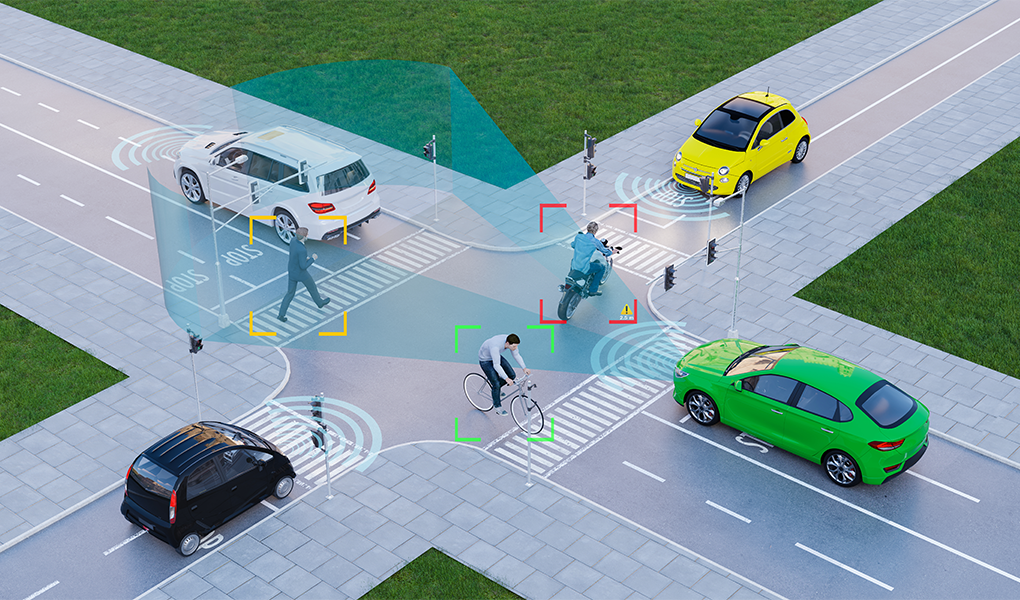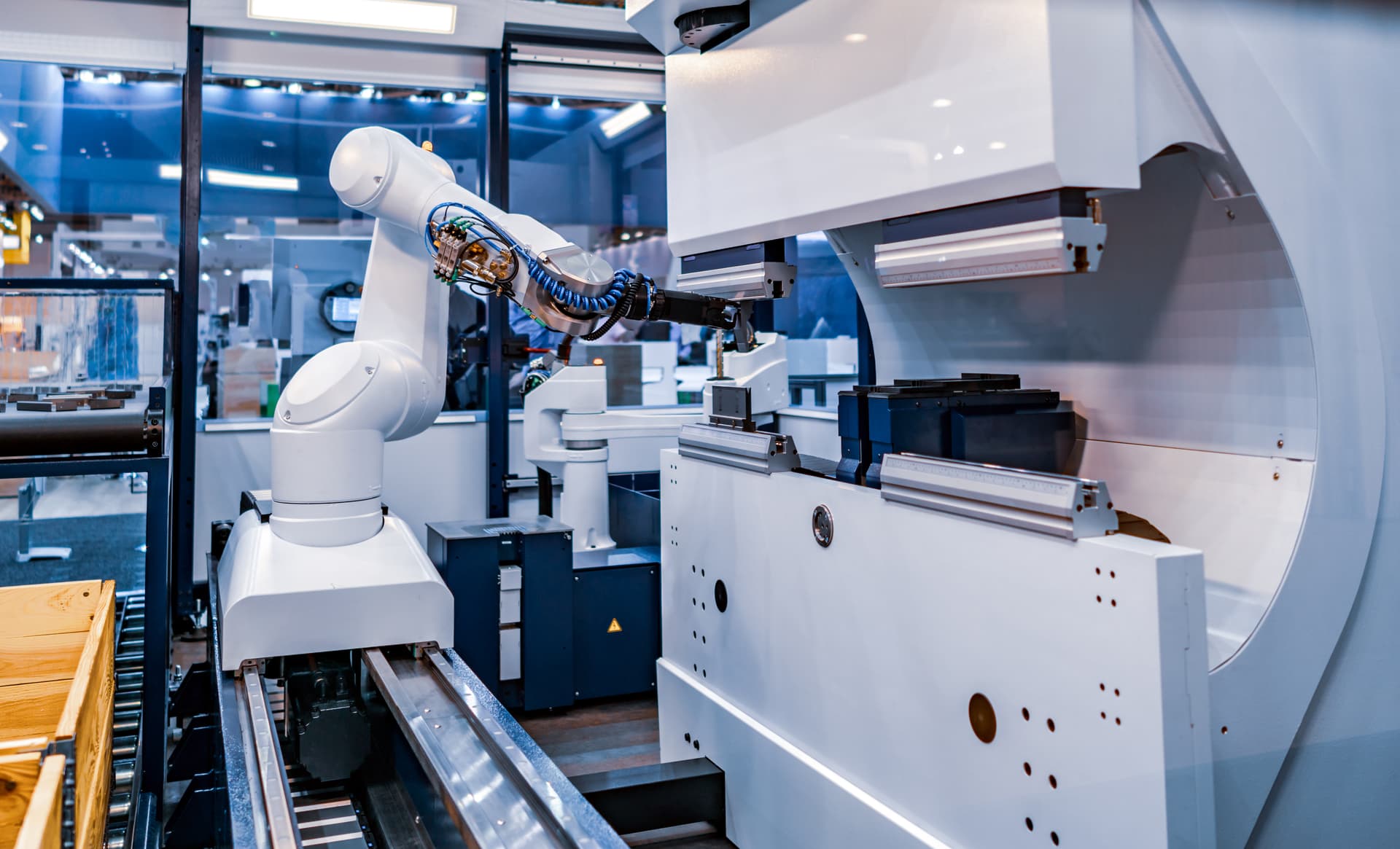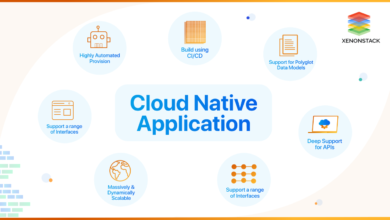
In the expansive realm of computer vision applications, the technology’s versatility and impact span numerous sectors, revolutionizing processes and experiences. In healthcare, computer vision facilitates precise medical imaging interpretation, disease diagnosis, and surgical assistance, enhancing patient care and treatment outcomes.
The automotive industry utilizes computer vision for autonomous navigation and safety enhancements. Security and surveillance employ facial recognition and video analytics for effective threat detection and public safety. Moreover, computer vision finds applications in entertainment, agriculture, and industrial automation, empowering industries to streamline operations, innovate, and thrive in the digital age.
Computer Vision
In the dynamic landscape of technology, An Introduction to Computer Vision reveals a realm where machines decipher and interpret visual information akin to humans. This interdisciplinary field within artificial intelligence allows computers to comprehend images and videos, revolutionizing various industries.
Computer vision processes visual data using algorithms for multiple tasks. Its significance spans healthcare, automotive, retail, security, entertainment, agriculture, and industrial automation, empowering innovations and enhancing efficiencies. Computer vision advances with deep learning, reshaping visual data interaction in the digital age through integration with emerging technologies.
In today’s digital age, computer vision is pivotal in numerous sectors, from healthcare and automotive to retail and entertainment. Its integration with advanced technologies such as machine learning and deep learning has unlocked unprecedented capabilities, fueling innovation and driving progress.

Fundamentals of Computer Vision
The Fundamentals of Computer Vision delve into the core principles that underpin its functionality and application across diverse domains. At its essence, computer vision encompasses machines’ acquisition, processing, and interpretation of visual data.
It begins with image acquisition, where cameras or sensors capture visual information from the environment. Subsequently, the processed images undergo feature extraction, where essential elements like edges, shapes, and textures are identified. This stage lays the groundwork for pattern recognition, where algorithms analyze features to recognize objects, faces, or gestures within the images.
These fundamental processes enable computers to comprehend and interpret visual content, facilitating tasks ranging from medical imaging and autonomous driving to augmented reality experiences. As computer vision technology evolves, advancements in algorithms and hardware continue to refine its capabilities, opening new avenues for innovation and discovery in the digital realm.
Feature extraction involves identifying key elements within the images, such as edges, shapes, and textures, which serve as building blocks for further analysis. Pattern recognition algorithms then analyze these features to recognize objects, faces, gestures, and other visual patterns, enabling machines to understand and interpret the content.
Applications in Healthcare
Computer vision revolutionizes diagnosis, treatment, and patient care in the healthcare industry. Medical imaging techniques such as MRI, CT scans, and X-rays leverage computer vision algorithms to detect anomalies, tumors, and other abnormalities accurately. This enables early intervention and personalized treatment plans, ultimately saving lives and improving outcomes.
Moreover, computer vision facilitates the development of advanced surgical systems that provide real-time feedback to surgeons, enhancing precision and minimizing risks during procedures. From robot-assisted surgeries to virtual simulations, the integration of computer vision technologies is reshaping the landscape of healthcare delivery.

Automotive Industry
Computer vision is pivotal in driving innovation and safety across various applications in the automotive industry. Autonomous vehicles rely on computer vision systems comprising sensors, cameras, and algorithms to perceive and interpret the surrounding environment.
These systems enable vehicles to detect obstacles, interpret traffic signs, and navigate complex road conditions autonomously, ushering in a new era of mobility and reducing the likelihood of accidents. Moreover, computer vision enhances driver assistance systems by providing real-time feedback and alerts to drivers, improving situational awareness, and reducing the risk of collisions.
From advanced driver assistance features to fully autonomous driving capabilities, the integration of computer vision technologies continues to redefine the automotive landscape, making transportation safer, more efficient, and more accessible for all.
Retail and E-commerce
In the realm of retail and e-commerce, computer vision revolutionizes the shopping experience, both online and offline. Visual search technologies empower consumers to discover products effortlessly by uploading images or using their device’s camera, streamlining the search process and enhancing user engagement.
Augmented reality applications allow shoppers to visualize products in real-world environments before purchasing, reducing uncertainty and driving conversion rates. Additionally, computer vision lets retailers personalize recommendations and tailor marketing strategies based on customer preferences and browsing behavior, fostering customer loyalty and satisfaction.
From virtual try-on experiences to interactive product displays, the integration of computer vision technologies reshapes the retail landscape, offering immersive, intuitive shopping experiences that resonate with modern consumers and drive business growth.
Augmented reality applications enable customers to visualize products in real-world environments before purchasing, enhancing confidence and reducing returns. By integrating computer vision into virtual try-on experiences and interactive product displays, retailers can create immersive shopping journeys that resonate with modern consumers.

Security and Surveillance
In security and surveillance, computer vision is a cornerstone technology, empowering organizations to enhance safety, monitor activities, and mitigate risks effectively. Facial recognition systems enable law enforcement agencies and businesses to identify individuals, bolster security protocols, and deter criminal activities precisely.
Advanced video analytics powered by computer vision algorithms facilitate intrusion detection, crowd monitoring, and behavior analysis, enabling proactive responses to potential threats. From airport security checkpoints to public spaces and private premises, computer vision technologies provide scalable solutions for safeguarding assets and ensuring public safety.
Despite concerns regarding privacy and ethics, the integration of computer vision in security and surveillance continues to evolve, driving innovation and enabling smarter, more effective approaches to threat detection and prevention.
In addition to facial recognition, computer vision enables advanced video analytics for intrusion detection, crowd monitoring, and behavior analysis. By leveraging machine learning algorithms, security personnel can identify suspicious patterns, alert authorities to potential threats, and minimize emergency response times.
Entertainment and Gaming
Computer vision is revolutionizing user experiences and interactive storytelling in entertainment and gaming. By integrating advanced technologies, such as virtual reality (VR) and augmented reality (AR), computer vision enables immersive gaming environments that blur the lines between the digital and physical worlds.
VR platforms transport users to interactive realms to explore virtual landscapes, interact with objects, and engage in captivating narratives. Computer vision also facilitates gesture recognition, facial tracking, and motion detection, enhancing gameplay and fostering natural interactions between players and digital environments.
From immersive VR experiences to mobile AR games, the integration of computer vision technologies continues to redefine the possibilities of entertainment and gaming, captivating audiences and pushing the boundaries of interactive storytelling.
Furthermore, computer vision enhances gaming experiences by enabling facial recognition, emotion detection, and personalized content recommendations. From augmented reality mobile games to motion-controlled consoles, the integration of computer vision enriches gameplay, fosters social interactions, and pushes the boundaries of interactive entertainment.

Agriculture
In agriculture, computer vision is a revolutionary tool for reshaping traditional farming practices and enhancing productivity. Farmers utilize drones with high-resolution cameras to monitor crop health, detect nutrient deficiencies, and identify pest infestations.
Farmers analyze images with computer vision algorithms to make data-driven irrigation, fertilization, and pest control decisions, optimizing yields. Computer vision technology fosters sustainable farming by targeting interventions, reducing resources, and enhancing crop resilience. As agriculture embraces digital transformation, computer vision emerges as vital in promoting efficiency, sustainability, and resilience in food production systems.
Industrial Automation
In industrial automation, computer vision is pivotal in revolutionizing manufacturing processes and optimizing efficiency. Industries can achieve unparalleled precision, flexibility, and scalability by integrating advanced vision systems with robotics and automation technologies. Machine-vision systems improve production.
Moreover, computer vision enables real-time object recognition and robotic guidance, facilitating seamless coordination and collaboration within manufacturing environments.
From assembly line operations to warehouse management, integrating computer vision into industrial automation streamlines workflows, minimizes errors, and enhances productivity. As technology continues to evolve, the potential for computer vision to drive innovation and transformation in industrial settings remains limitless.

Challenges and Limitations
Several challenges and limitations come to light in navigating the landscape of computer vision applications and shaping their trajectory and implementation. One significant hurdle is addressing data privacy concerns, ethical considerations, and algorithmic biases that may undermine trust and acceptance.
Achieving robustness, accuracy, and reliability in real-world environments poses another formidable task, necessitating ongoing research and development efforts. Interpretability and explainability concerns linger in computer vision.
As technology evolves, it is essential to prioritize transparency, accountability, and inclusivity to mitigate these challenges effectively. By fostering collaboration and embracing ethics, computer vision can fulfil its potential to reshape industries and enhance lives.
Future Trends
Conclusion
In conclusion, computer vision applications are reshaping various industries and human experiences. Its capacity to interpret visual data drives groundbreaking progress across sectors. Computer vision has proven instrumental in driving innovation and efficiency, from enhancing medical diagnostics to revolutionizing autonomous driving.
Despite challenges such as data privacy concerns and algorithmic biases, the future of computer vision holds immense promise. Continued research ethics drive computer vision’s innovation and progress in the digital age. Its impact will resonate across society, fostering safer, more efficient, and more personalized experiences for individuals and businesses.
How accurate are facial recognition systems in real-world scenarios?
The accuracy of facial recognition systems varies depending on factors such as lighting conditions, image quality, and algorithmic sophistication. While significant advancements have been made, challenges remain in achieving consistent performance across diverse demographics and environments.
What are the ethical implications of widespread facial recognition adoption?
The widespread adoption of facial recognition raises concerns about privacy, civil liberties, and surveillance. It raises questions about consent, data protection, and the potential for misuse or abuse of the technology by governments and corporations.
How does computer vision contribute to environmental sustainability in agriculture?
Computer vision enables precision agriculture practices by facilitating targeted interventions such as optimized irrigation, reduced chemical usage, and early pest detection. By minimizing resource consumption and environmental impact, it promotes sustainable farming practices and enhances food security.
What are some emerging trends in computer vision research?
Emerging trends in computer vision research include multimodal learning, self-supervised learning, and few-shot learning techniques. Researchers are also exploring interdisciplinary applications such as multimodal human-robot interaction, explainable AI, and neuro-symbolic reasoning.








